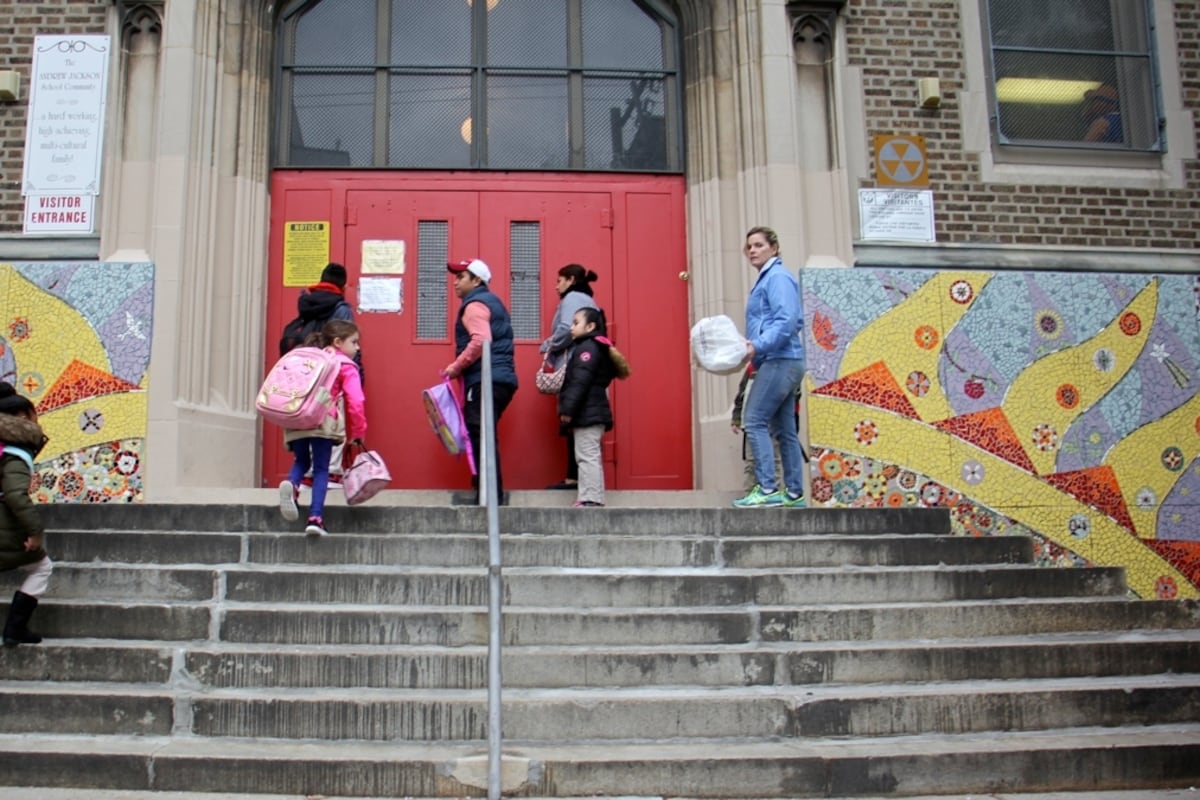Before the pandemic, Philadelphia schools had 28 different start times, Danielle Floyd, general manager for transportation, told parents and community members at a district webinar Wednesday.
Student rides could be as long as 90 minutes, and late buses were common, she said. During the last full in-person school year, the district transported 41,000 students — from district, charter and private schools, as required by state law — on 2,000 routes to 500 different locations in Philadelphia and surrounding counties.
In 2019, officials began the complicated process of standardizing times into a more manageable order.
But, the pandemic disrupted all of it. More than 300 bus drivers retired or resigned in the last 19 months, Floyd said.
“With significant reduction of staffing, we simply did not have enough personnel to operate at a pre-pandemic level without increasing ride times for students,” she said.
Last week, the district unveiled a new bell schedule with three main start times — 7:30 a.m., 8:15 a.m., and 9:00 a.m. The blowback was immediate from parents, principals and teachers.
Wednesday, Floyd and Evelyn Nuñez, Chief of Schools, answered community questions via two webinars.
“What this model allows is using a vehicle up to three times daily,” Floyd said. In cases of breakdown or unexpected driver absences buses not on a regular route can be quickly dispatched, she said. The new schedule will also allow for consistent cleaning of high-touch areas on buses between runs.
In the face of the complaints about the start time changes, the district presented the new policy as “an effort to create experiences that best meet the educational needs of all students and efficiently address our operational needs.”
Nuñez said they realized the new schedule presented problems, not the least of which is starting most high schools at 7:30 a.m., but they said it is the best they could do this year.
More frustrating for some parents, most of the students the district transports by bus, van or cab don’t even go to district schools.
Of the 41,000 students the district transports every day, only 13,500 attend district-run schools district officials confirmed. The rest attend charter and private schools.
“They are rearranging the whole schedule for a tiny minority of students,” said parent Stephanie King.
Under state law, the district must transport students from grades one through six to schools up to 10 miles outside the city. Eligible students must live more than a mile and a half from the school they attend. Older students get free SEPTA Key cards to use public buses, trolleys and trains.
State law requires school districts to provide transportation for charter school students who meet the criteria. It does not require districts to provide transportation for its own students, but if it does, it must also transport private school students, the law says.
Floyd and Nuñez said that the bell schedule changes were made in consultation with principals and school communities, although the head of the principals’ union, Robin Cooper, said that the school leaders were “blindsided” by the decision to offer just three main start times to schools - resulting in many schools changing their starts.
Many complaints centered on the earlier start times for high schools, most of which are scheduled to start at 7:30 a.m. This goes against the advice of the American Association of Pediatrics, which calls lack of sleep for adolescents a “public health problem.”
Nuñez said the long-term goal for the district was to “follow the science” for optimal learning conditions in setting schedules, but explained that this year it was not possible.
Most high school students do not ride yellow buses, so several participants in the webinar asked why they needed to start so early. Floyd said that this was due to Philadelphia having a “transient” population.
“Students may enroll at any given time at a later date during the course of the year that may require transportation, and it would be challenging to change the schedule mid-year,” she said.
Officials were also cognizant that many older students had jobs after high school and were responsible for picking up younger siblings, Nuñez said.
“We have made these changes for the upcoming year, but beginning in late September we will continue to have forums like this with various stakeholders to start planning early for the 2022-23 school year,” she said. “If we work collaboratively, we can figure this out.”
Schools are scheduled to start on Aug. 31. Start times were posted on the website last week and then removed. As of Thursday morning, they had not been updated.







